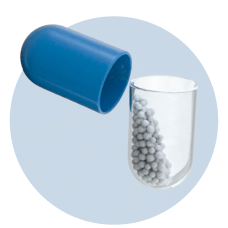Simlup 20mg Tablet
Product introduction
Simlup 20mg Tablet is usually taken in the evening, with or without food. However, taking it with food may reduce the chances of nausea. Take it regularly for maximum benefit. Most people with high cholesterol and triglycerides do not feel ill, but stopping the medicine may increase cholesterol and triglyceride levels, making the condition worse and increasing the risk of heart disease and stroke.
It is important to have your cholesterol levels checked regularly. This medicine is only one part of the treatment program, which should also include a healthy diet, regular exercise, smoking cessation, moderation of alcohol intake, and weight reduction. You can eat normally while taking this medicine, but try to avoid foods that are high in fat.
Common side effects of Simlup 20mg Tablet include upper respiratory infections, headache, abdominal pain, constipation, and nausea. These are usually mild and temporary. Consult your doctor if they persist. Inform your doctor if you notice any yellowing of your eyes or get repeated or unexplained muscle pains.
Simlup 20mg Tablet should not be used in individuals with severe liver disease. Also, pregnant and breastfeeding women should not take this medicine as it may harm the baby. Diabetic patients should monitor their blood sugar levels while taking this medicine, as it may lead to an increase in blood sugar levels.
Uses of Simlup Tablet
- Treatment of High cholesterol
- Treatment of High triglycerides
- Prevention of heart attack and stroke
Benefits of Simlup Tablet
In Treatment of High cholesterol
In Treatment of High triglycerides
In Prevention of heart attack and stroke
Side effects of Simlup Tablet
Common side effects of Simlup
- Constipation
- Headache
- Upper respiratory tract infection
- Abdominal pain
- Nausea
How to use Simlup Tablet
How Simlup Tablet works
Safety advice
Use of Simlup 20mg Tablet is not recommended in patients with severe liver disease and active liver disease.
What if you forget to take Simlup Tablet?
All substitutes
Quick tips
- Simlup 20mg Tablet should be taken in the evening after dinner and before sleeping.
- Take this medicine along with regular exercise and a low-fat diet to lower levels of fat in the blood.
- Inform your doctor if you experience fatigue, muscle weakness, or muscle pain.
- Your doctor may check your liver function before starting the treatment and regularly thereafter. Inform your doctor if you notice signs of liver problems, such as stomach pains, unusually dark urine, or yellowing of skin or eyes.
- Inform your doctor if you have kidney disease, liver disease, or diabetes before starting treatment with this medicine. If you are diabetic, monitor your blood sugar level regularly as Simlup 20mg Tablet may cause an increase in your blood sugar level.
- Do not take Simlup 20mg Tablet if you are pregnant, planning a pregnancy, or breastfeeding.
Fact Box
Interaction with drugs
Patient concerns
User feedback
FAQs
What is Simlup 20mg Tablet used for? How does it work?
Is Simlup 20mg Tablet safe to take?
What should I know about high cholesterol?
When should I take Simlup 20mg Tablet?
For how long should I take Simlup 20mg Tablet?
What foods should be avoided when taking Simlup 20mg Tablet?
Can I take alcohol with Simlup 20mg Tablet?
Related ayurvedic ingredients
Disclaimer:
Tata 1mg's sole intention is to ensure that its consumers get information that is expert-reviewed, accurate and trustworthy. However, the information contained herein should NOT be used as a substitute for the advice of a qualified physician. The information provided here is for informational purposes only. This may not cover everything about particular health conditions, lab tests, medicines, all possible side effects, drug interactions, warnings, alerts, etc. Please consult your doctor and discuss all your queries related to any disease or medicine. We intend to support, not replace, the doctor-patient relationship.References
- Bersot TP. Drug Therapy for Hypercholesterolemia and Dyslipidemia. In: Brunton LL, Chabner BA, Knollmann BC, editors. Goodman & Gilman’s: The Pharmacological Basis of Therapeutics. 12th ed. New York, New York: McGraw-Hill Medical; 2011. pp. 893-902.
- Gotto AM Jr, Opie LH. Lipid-Modifying Antiatherosclerotic Drugs. In: Opie LH, Gersh BJ, editors. Drugs for the Heart. 8th ed. Philadelphia, Pennsylvania: Elsevier Saunders; 2013. pp. 418-19.
- Briggs GG, Freeman RK, editors. A Reference Guide to Fetal and Neonatal Risk: Drugs in Pregnancy and Lactation. 10th ed. Philadelphia, PA: Wolters Kluwer Health; 2015. pp. 1266-67.
Marketer details
The list of available options shown with the same composition has been prepared upon the advice of registered medical practitioners, pharmacists affiliated with TATA 1MG. TATA 1MG does not promote any pharmaceutical product of any particular company, and all recommendations are based on the medical opinion, advisories from specialist medical and pharmaceutical professionals.
Lab tests offered by us













